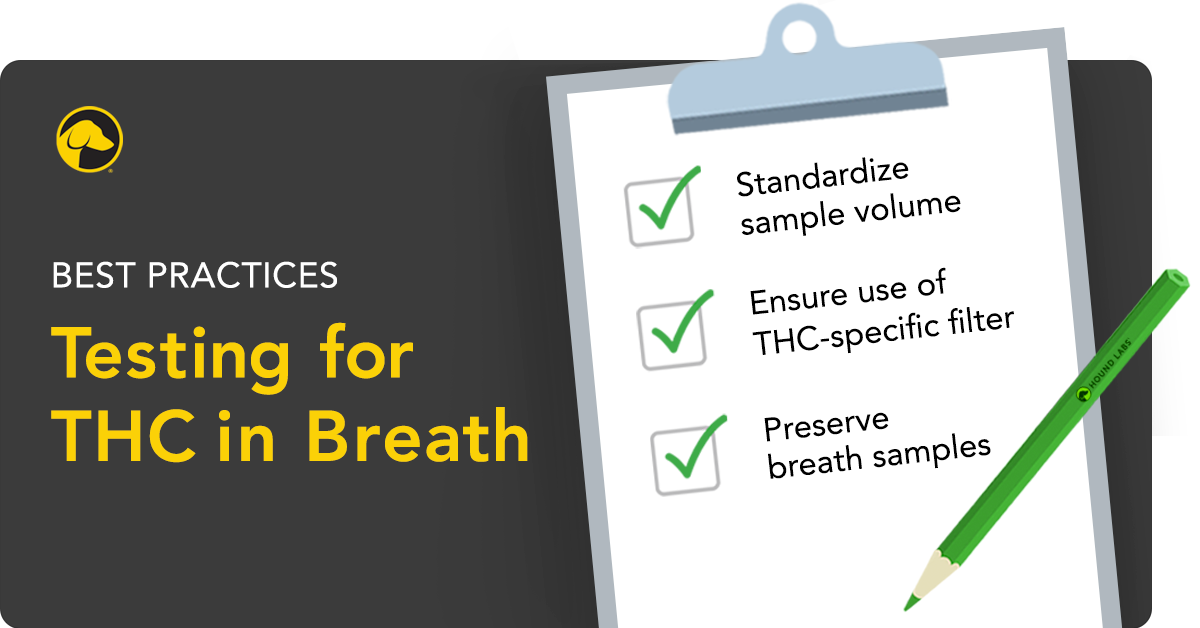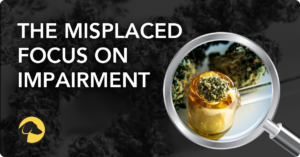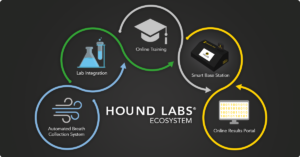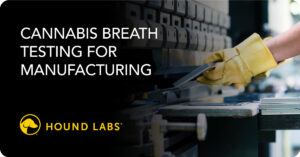
The Science Behind Breath Testing: Key Lessons Learned
In my nearly seven years with Hound Labs, one thing that has remained constant is the overarching objective of continuous research and development. This objective was established by Dr. Mike Lynn, our CEO and Co-Founder, well before I joined. As one of Hound Labs’ first few employees, I have had the unique opportunity to watch the company drive toward this goal. We have been conducting testing with human subjects since 2015 and because of this ongoing feedback, we have developed countless iterations to optimize usability and efficacy. In addition to creating a highly sensitive and automated breath technology, our research has blazed a largely uncharted trail.
There have been wins and hurdles along the way, but no achievement has distracted us from our focus, and no setback has deterred us from our collective resolve to ensure the products we manufacture will help our customers and their employees keep up with the legal status of cannabis. I recently chatted with Mike about some of the lessons our team has learned about the science of THC breath testing and what is required to make an accurate and reliable cannabis breathalyzer.
Launching any new, scientifically advanced technology is incredibly difficult. What has kept the team focused all these years?
For many years, we have listened to employers tell us they only need to identify workday cannabis use and want to purchase the HOUND® CANNABIS BREATHALYZER to balance their ability to recruit and retain employees while maintaining workplace safety. I remember one small business owner who summed it up this way, “Zero tolerance equals zero employees.” However, this business owner also knew he needed to continue to test for cannabis to deter employee use during shifts at his manufacturing company. Years later, the 2021 National Safety Council survey found workplace safety incidents and performance issues related to cannabis use continue to be a concern.1
And it’s not just employers asking for a solution – employees are also seeking one. Employees want privacy regarding their choices when off the clock and away from the workplace. It has been extremely motivating over the years knowing the Hound® solution can uniquely meet the needs of both employers and employees.
Hound Labs has always emphasized testing with human subjects. Why is this so important?
It relates to the previous question – testing with human subjects has kept us focused on developing a useful and usable solution. That’s because years and years of continuous testing with human subjects has provided us with both scientific and usability feedback loops, informing product iterations. The thousands of data points we have collected during human subject testing have been invaluable – helping us to design and automate the HOUND® CANNABIS BREATHALYZER for easier collection and analysis of breath samples.
With all the research conducted by Hound Labs, the Company has developed an incredible knowledge base. Please share one of the best practices developed by the science and engineering teams.
Testing breath for THC (the principal psychoactive compound found in cannabis), provides a unique advantage over other tests (oral fluid, urine, and hair) because cannabis can only be measured in breath for a few hours. The shorter detection window in breath provides more relevant information to employers about cannabis use proximate to the workday compared to other testing methods with detection windows of days (oral fluid), weeks (urine), and months (hair).
“One of the first important lessons: Use a saliva (oral fluid) trap.”
Why? THC molecules from the lungs can be captured in a breath sample for a limited period of time. In contrast, THC in saliva results from contamination in the oral cavity (mouth). Saliva traps are designed to separate breath from oral fluid, helping to prevent oral fluid contamination from entering the breath sample.
One of the challenges of conducting research is achieving repeatable, valid results. That is a big hurdle when researching breath because everyone breathes differently. What have you learned about controlling for individual variability?
When we embarked on this journey of creating the world’s first ultra-sensitive cannabis breathalyzer, we didn’t contemplate that the first critical steps would be developing a proprietary approach to capturing breath specifically optimized for THC.
“The key learnings from years of working with human subjects have resulted in several best practices for capturing breath samples. This includes standardizing the volume of the breath sample and utilizing a filter designed and tested to be effective for THC collection.”
Everyone’s lung size and airflow vary, but to produce repeatable, valid results, we had to find a way to accommodate these differences while also determining a uniform sample volume. We engineered our technology to consistently collect a specific sample size. Without automated standardization during our research, we would introduce variables into the data. This research best practice – standardizing breath sample volume – became a necessary product feature for our HOUND® CANNABIS BREATHALYZER to provide peace of mind to employers and employees that the collected samples have been optimized for consistent and reliable analysis of THC.
Over the years, we have also learned about the unique challenges of capturing THC molecules in breath. The THC molecule not only appears in low concentration (parts per trillion) but is also a very “sticky” molecule. The combination of the low concentration of THC in breath and the stickiness resulting from its unique structure requires a filter that efficiently captures the molecule but does not trap it so successfully that it will not eventually release it for analysis. We spent many years testing various filters before finally determining the best composition for one.
Do you have other examples of best practices developed over the years as you have studied THC in breath?
Yes, we have many; probably too many to discuss here, but I will highlight one more.
“A best practice that we learned a few years into our research is that once we collected a breath sample, we either needed to analyze it immediately or preserve it in a liquid form.”
At one point, we tried freezing breath samples without preserving them, but we learned rather quickly that this approach introduced instability and resulted in THC “spikes” and “valleys”. This variability in data meant we couldn’t draw useful conclusions from the samples.
Is there anything else you want to share?
Developing a cannabis breathalyzer that is 1 billion times more sensitive than an alcohol breathalyzer was also about 1 billion times harder than we anticipated. We wouldn’t be introducing the HOUND® CANNABIS BREATHALYZER without an exceptional group of people helping us over the last 10 years, including you, Louisa. It’s important for me to make sure others are recognized because it has required thousands of people to create the world’s first ultra-sensitive cannabis breathalyzer.
LEARN MORE
Thank you, Mike, for speaking with me today.
To learn more about the innovative science and engineering developed at Hound Labs, read these additional blogs:
Footnotes

June 22, 2023
By LOUISA ASHFORD
Director of Marketing
Share











